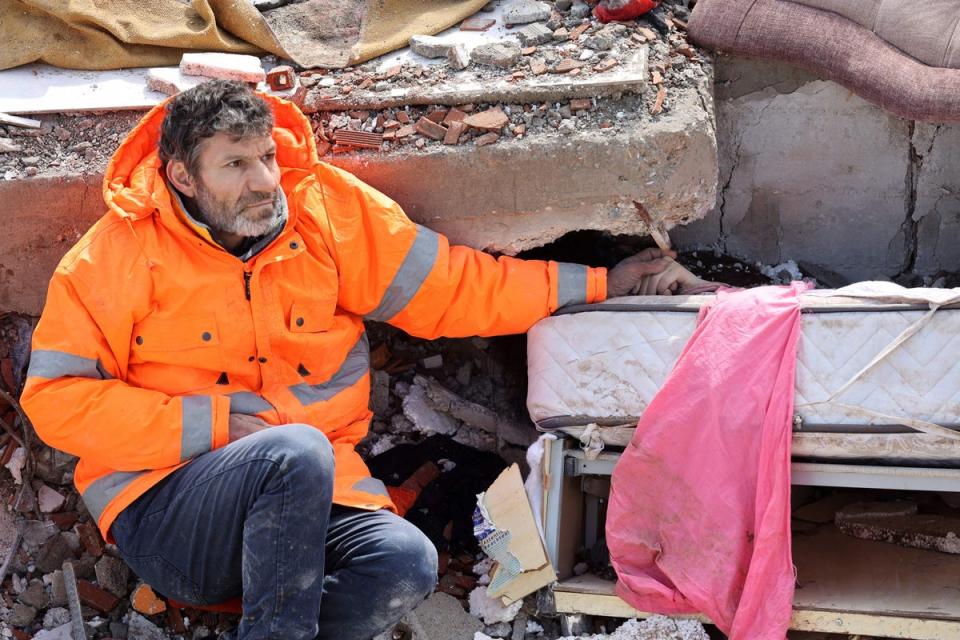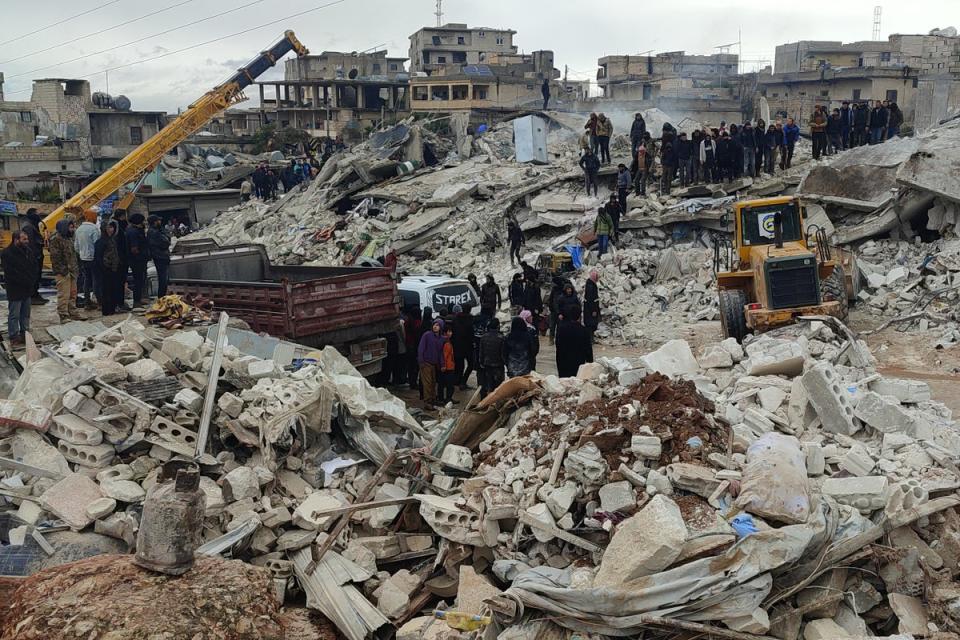Miracle baby born in Turkey earthquake rubble as mother trapped during labour dies
A newborn girl has been rescued from under a collapsed building in Syria, with its mother having given birth while buried under the rubble in the wake of the devastating earthquakes that struck the country and Turkey.
The baby was found buried under the debris with her umbilical cord still connected to her mother, who was found dead.
Footage shared online shows rescuers lifting the dust-choked newborn to safety as they scale the mounting debris of buildings crumbled by a devastating earthquake.
The baby was the only member of her family to survive the building collapse on Monday in the small town of Jinderis, next to the Turkish border, Ramadan Sleiman, a relative, told the Associated Press. Jinderis, located in the rebel-held enclave of northwest Syria, was hard hit in the quake, with multiple buildings destroyed.
A female neighbour cut the cord, and she and others rushed with the baby to a children’s hospital in the nearby town of Afrin, where she is being kept in an incubator, said Dr Hani Maarouf, the physician treating. The baby’s body temperature had fallen and she had bruises, including a large one on her back, but she is in stable condition, he said.
Dr Maarouf said he believed the baby had been born about three hours before being found, given how far her temperature had dropped.
The baby’s miraculous rescue was one of the thousands across Turkey and Syria, as overwhelmed emergency workers worked through close-to-freezing temperatures, unrelenting rainfall, and power outages. Jinderis saw another dramatic rescue on Monday evening when a toddler was pulled alive from the wreckage of a collapsed building. Video from the White Helmets, a civil defence group, shows a rescuer digging through crushed concrete amid twisted metal until the little girl, named Nour, appeared.
However, with thousands having died in the initial earthquake, a second major one and dozens of aftershocks – many families have been left mourning the loss of loved ones.

One image from the Turkish region of Kahramanmaras, shows a father holding the hand of his dead teenage daughter as rescuers and civilians pick through the flattened building where she died on Monday.
Sitting hunched in the rubble, Mesut Hancer keeps hold of 15-year-old Irmak as she lies on her bed beneath the slabs of concrete, smashed windows and broken bricks that were once apartments. Close to the father and daughter, a man with a sledgehammer tries to smash his way through the ruins.
The epicentre of the first earthquake was the Pazarcik district of Kahramanmaras, which lies in southeast Turkey
Turkish authorities say some 13.5 million people were affected in an area spanning roughly 450km from Adana in the west to Diyarbakir in the east, and 300km from Malatya in the north to Hatay in the south.

Earlier on Tuesday, the head of the World Health Organisation (WHO) said it was especially concerned about areas of Turkey and Syria from which no information had emerged following a major earthquake that killed thousands.
“We’re especially concerned about areas where we do not yet have information,” Dr Tedros Adhanom Ghebreyesus told the WHO’s executive board meeting in Geneva.
“Damage mapping is one way to understand where we need to focus our attention.”
Dozens of countries deployed rescue teams to assist in the search, including a team of British search-and-rescue specialists heading to Turkey.
The development minister, Andrew Mitchell, confirmed on Tuesday morning that the British package of support – which includes a team of 76 search-and-rescue specialists, complete with state-of-the-art equipment and four specially trained dogs – would be leaving in the next couple of hours.
With agencies


